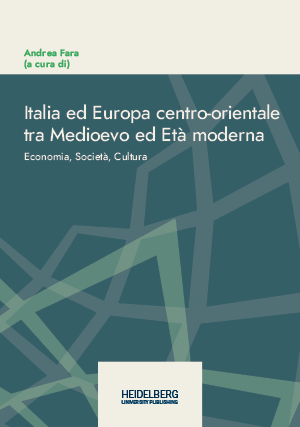How to Cite
License (Chapter)

This work is licensed under a Creative Commons Attribution-ShareAlike 4.0 International License.
Identifiers (Book)
Published
Movable Types Between Italy and East Central Europe
Multiple Mobilities in the Sixteenth Century Adriatic
Abstract This essay investigates material objects and ‘their’ human companions in the Renaissance Adriatic. Notarial deeds and testaments from Venetian Dalmatia are utilised to reconstruct flows and means of communication and exchange. In a first step, the methodological and conceptual preliminaries are discussed, in particular relating to the sources and their suitability for qualitative and quantitative analysis. Notarised acts and testaments typically contain relevant geographical, economic, religious, and social information, thus rendering them useful for the reconstruction of individual as well as aggregated experiences of mobility. In the second part, this essay provides a selection of examples to as well as a quantifying outline to identify recurring patterns of people and goods on the move. In these undertakings, I am guided by the following questions: what kinds of objects were comparatively common throughout the sixteenthcentury Adriatic, a maritime entrepôt situated at the crossroads between Catholicism, Orthodoxy, and Islam? Who were the actors and what roles did ‘foreign’ objects play in everyday life? In combination, analysis of both types of sources allows the historian to retrace the multiple mobilities of various material objects and ‘their’ (temporary) human keepers, as well as to critically assess the characteristics, means, and ranges of material objects as they travelled through space and time as well as across borders.




